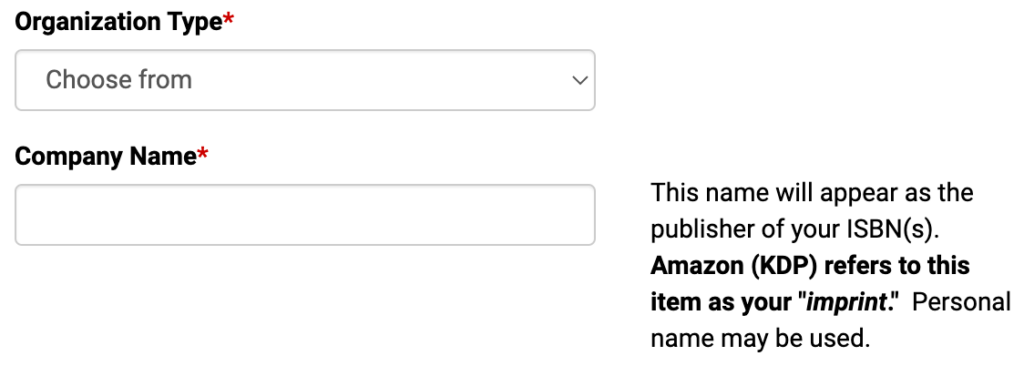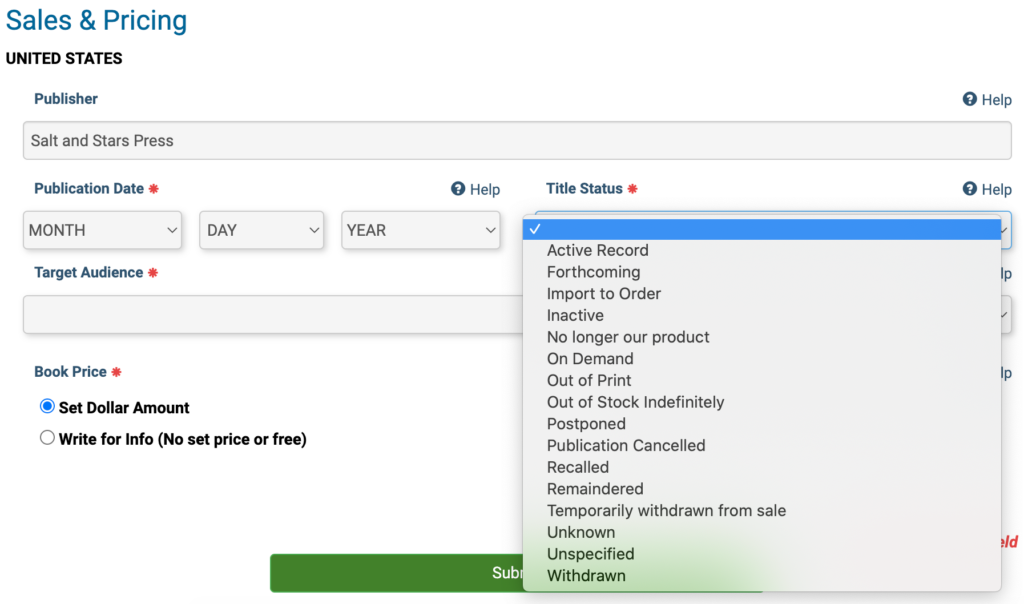What is an ISBN? It’s the 13-digit number listed on a book’s copyright page and above the barcode on the back cover. All printed books have them, as do most digital versions—it’s a way to uniquely identify the work, provides a way to track sales, and it is a legal requirement. The number itself may seem random, but there’s actually a meaning behind it: including who published the book, where it was published, and other important metadata (like author and title).
Each version of your book requires a separate ISBN. For example:
- Paperback
- Hardcover
- eBook
- A new edition of a published book
There are two general places to get an ISBN
through a government-approved agency or a publishing and distribution platform. The International ISBN Agency provides a list of these approved agencies, and you can sort by country. In the U.S. the ISBN provider is Bowker. ISBNs can be purchased in bulk or individually. For Bowker, the pricing goes:
- $125 for a single ISBN
- $295 for 10
- $575 for 100
- $1,500 for 1,000
- These do not expire. They cannot be reused.
Important notes when creating your account with Bowker

- There are two organization types you will likely choose, publisher or self-publisher. I would choose publisher if you’ve set up a registered imprint (see here for tips on how to do that!) and self-publisher otherwise.
- For company name, which is a required field no matter what organization type you go with, make sure you use whatever name you want to be listed as the book’s publisher. This can be your personal name or your imprint name, and is what will be displayed to the public in distribution channels and wherever your book is sold.
The other option is using an ISBN provided by your publishing platform, i.e. Barnes & Noble, Amazon, etc. These are usually free but there are a couple of caveats: the distributor is listed as the publisher (not you), and that ISBN cannot be used anywhere outside of that platform—which means if you wanted to sell your paperbacks elsewhere, you’d need a new ISBN, and the sales get treated as two separate titles despite it being the same book. This is important to remember for your e-book since some platforms, such as KDP, put the ISBN as optional.
Once you’ve purchased your ISBNs, you’ll need to input some standard information, such as publisher, author, title, etc. They’ll also require a list of the contributors and what their functions were, pricing, target audience, and a JPG image of the cover. Keep in mind it takes a few days for the system to process this information and submit it to the Books in Print database, so don’t wait until right before your book’s launch date to do it.
A couple of notes on filling out the ISBN details

- For some reason, the field around book contributors really tripped me up. A lot of people helped with my book—from editors to sensitivity readers to betas—but who do I list? A good rule of thumb here is if you don’t have their name on the cover, then you don’t need to add them to the list of contributors.
- For status, you’ll want to select Forthcoming if you’re doing a preorder, but you’ll need to set a reminder to yourself to change it to Active Record before the launch date!
Navigating ISBNs can be so confusing. I hope this post was helpful!




